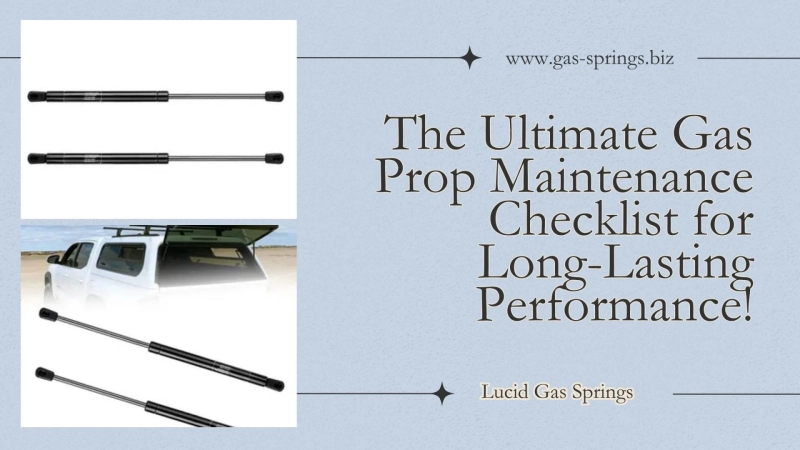If you're relying on a gas prop to lift, support, or lower heavy components like hatches, lids, or panels, you know just how important it is to keep it functioning smoothly. But like any mechanical part, it won’t stay perfect forever. Over time, dust, moisture, and wear can throw things off. That’s where a smart maintenance routine steps in. A solid upkeep plan helps avoid sudden failures, weird noises, and costly replacements.
Below is your go-to checklist to keep your prop working like a charm.
Check for Visible Damage
First things first. Give your gas prop a good visual inspection. Look out for dents, scratches, or any bent components. If you spot oil leakage or corrosion, it’s time to take action. These small issues might seem harmless at first, but they can lead to bigger problems down the road. Trust your eyes, if something looks off, it probably is.
Keep It Clean
Dust and grime can mess with how your prop works. Use a soft cloth to gently clean the rod and cylinder. Skip the harsh chemicals and avoid abrasive pads. A little soap and water go a long way. Just be sure to dry it properly afterward to prevent rust or residue build-up. Make this a routine, especially if your prop is exposed to the outdoors.
Lubricate Wisely
Not all gas props need regular greasing, but if your model does, apply a light lubricant to the pivot points only, not the shaft. Avoid slathering it all over. Too much oil attracts dirt and creates a sticky mess. Use silicone-based spray if needed, and always check the manufacturer’s guidelines before doing anything.
Test the Pressure
A prop that feels weak or slams shut isn’t doing its job. Try opening and closing the supported component slowly. Does it stay up? Is the motion smooth? If it drops too quickly or resists opening, the internal pressure might be off. Sadly, most props aren’t refillable, so if the pressure is gone, you’ll need a replacement.
Inspect Mounting Points
Loose or damaged brackets can throw everything out of alignment. Every few months, check the mounting points for wear or wobble. Tighten screws, replace worn bushings, and make sure the brackets aren’t cracked. A wobbly mount can cause strain and reduce the lifespan of your prop.
Listen Closely
Hissing, popping, or grinding? Yeah, that’s not normal. A gas prop should work quietly. Strange noises often signal internal wear, seal failure, or poor lubrication. Don’t ignore the sounds, they’re trying to tell you something’s wrong. Catching the issue early can prevent bigger headaches later.
Store with Care
Not using the prop for a while? Store it shaft-down in a cool, dry place. Keeping the shaft vertical helps protect the internal seal from drying out. Also, avoid stacking heavy items on top of it or tossing it in with a bunch of tools. Treat it gently to get the most bang for your buck.
There’s no big secret to making your gas struts last longer. So roll up your sleeves, it’s time to give your strut the care they deserve.



